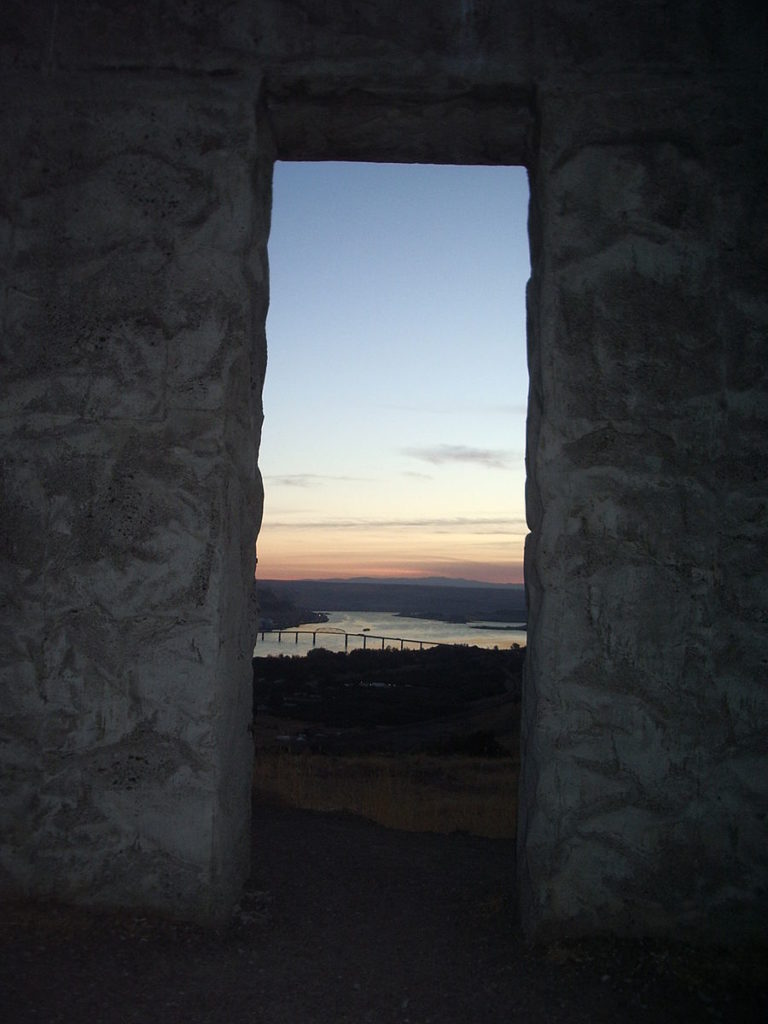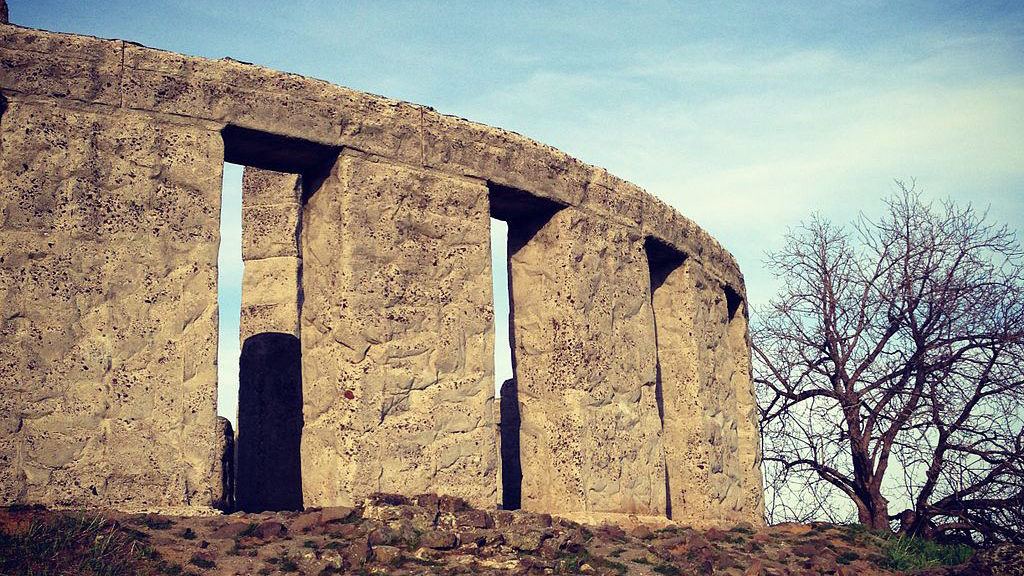Stones cast long shadows
They paced the distance, built an earthen ring,
Split hard rock, pushed up each crushing stone,
And built a doorway for the rising sun
To enter when the Earth turned back to spring.—Emily Burns
I’m standing on a bluff getting pummeled by wind. The westward sun throws a spectacular gleam on the river below, a shiny ribbon threading through the gorge. Here on the precipice of the light half of the year, there’s a radiance to the waning daylight, as if the veil of winter has finally lifted.
Behind me, to the east, the standing stones stretch their shadows.
I follow the last streaming rays of daylight through a doorway, and I’m inside the stones. Stepping into their midst is like entering the embrace of a mountain. They encircle me like concentric rings of dancers waiting for the first note to strike. I feel as though I’m standing in the center of a neolithic clock whose cogs might start turning at any moment, each ticking in a different direction.

But these stones weren’t erected by prehistoric hands. They weren’t dragged from a quarry miles away in a mysterious feat of human ingenuity. They haven’t absorbed thousands of years’ worth of prayers, tears, awe, reverence and magic.
They were molded from concrete less than a hundred years ago. They were poured and cured and rebarred. And they are massive.
Built to scale, they throw a crisscross of shadows toward the central altar. This is what Stonehenge must have looked like when it was new. Before the crumbling set in. Before the stone ranks began to fall.
This sacred ground has a different flavor though. Planted 800 feet above the Columbia River, the stones seem less rooted here. Winds constantly gust through their gaps, stirring up perpetual motion as earth and air fight each other for dominance. Stillness is rare, here among the stones.
There are three of us. We weave between them like cats, exploring, absorbing, chasing our shadows. We bring offerings of wine and bread. We bring candles and incense and water scooped from a nearby lake, whose surface hides the underwater remains of a 3,500-year-old native village. …
